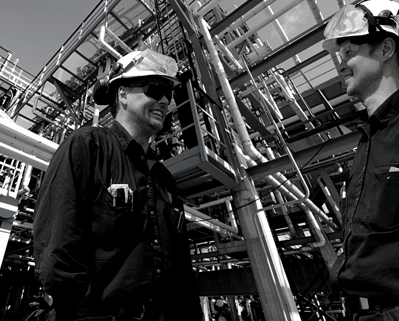5 Ways to Advance Your Analytic, Data Science, and ML Projects for a Successful 2022
As a leader in the energy industry, you’ve likely seen many analytic projects enthusiastically broached by various departments, only to never fully come to fruition. Hopefully, you’ve also seen the alternative: passion-fueled analytic projects that are wildly successful at increasing performance.
Why do some data science projects succeed, and some barely make it past ideation?
2022 will be here before operations know it, and while the excitement of a new year marks a refresh for financial outlooks, it also offers an opportunity to assess analytic, data science, and machine learning projects to guarantee ROI.
Keep reading for five tips to make sure your analytic, data science and machine learning (ML) projects allow your operation teams to stay competitive, nimble, and proactive in 2022 and beyond.
1. Align Analytic Aspirations with 2022 Business Strategy
One of the most fundamental ways to secure analytic success is by aligning projects with business goals. This means determining analytic project outputs (increasing performance, reducing downtime, replacing manual tasks, etc.) and making sure that there is alignment with different departments and executives.
In fact, according to Finances Online 2021 Study, the primary cause of project failures is a change in organizational priorities, followed by a change in project objectives. By aligning the two, you'll not only secure success, but you will gain company-wide buy-in by solving problems that really move the needle.
.png?width=656&name=Copy%20of%20ESP%20Post%20%20(7).png)
Leverage your analytic prowess by focusing on tactile outcomes via one specific use case in one department - as a start - and as a foundation for your analytic journey and respective ROI.
2. Empower Your People
Once you have your first analytic project and desired outcomes aligned, it’s time to empower your team to be the SMEs to drive adoption.
We recommend achieving success by implementing easy-to-use self-service tools that put the power directly in your engineers’ hands. This means faster outcomes, ROI, and better learnings from your projects, across your fleet.
While many products claim “self-service,” we encourage you to define true self-service as collaborative problem solving while incorporating your data science and operations teams. Examples of self-service tools include:
- analytic building blocks that you control, tweak, and add your knowledge
- drag-and-drop editors without the need to code
- tools that use automation to replace existing manual processes
By empowering your people throughout your data science, machine learning, and analytic projects, you give your teams an opportunity to impact their workflow as well as operational improvement.
3. Leverage Resident SMEs
 The landscape is changing, but people will always be the most valuable aspect of your operation. By leveraging your citizen SMEs in your analytic projects, you can nimbly mitigate the problem of worker shortages/burnout/retirement while continuing to increase asset productivity.
The landscape is changing, but people will always be the most valuable aspect of your operation. By leveraging your citizen SMEs in your analytic projects, you can nimbly mitigate the problem of worker shortages/burnout/retirement while continuing to increase asset productivity.
While hiring and knowledge transfer challenges are not likely to go away, you can alleviate by instituting standardization and integrating existing SME knowledge into automated workflows that improve your organization. This helps to spread knowledge, and improve workflow, rather than keeping it siloed in spreadsheets.
4. Work Smarter with Automation
Scan any aspect of history, and you'll find technological advancement being met with automation. From robotic self-service counters to chatbots to "drag and drop" interfaces... if you have to do something more than once, there’s an opportunity to automate the process.
Even in its simplest form, self-service solutions allow workers to automate tedious tasks. This means more time spent being proactive, strategic, and innovative.
In the energy industry, this equates to the ability to go beyond the tedious creation of reports, allowing you to automate them as necessary. It means automating work orders, and communication to address asset problems sooner with real insights, not just a deluge of alerts. Automation allows organizations to go beyond traditional outputs seen from analytic projects, achieving real, consistently improving success.
5. The Balance of Technology
The incoming workforce wants to work for operations that are technologically advanced. But, as much as that next generation of energy workers may consider that technological advancement a non-negotiable, the existing generation can equally find it difficult to solve and implement.
The most important aspect of any data science, analytic, or machine learning project is the ability for its integration to be ROI-driven with tactical outcomes in a short period of time.
Here are some questions to ask of your advanced analytics technology:
- What is required to make a basic change to an analytic?
- To build a new analytic?
- How long does it take to get new team members up to speed?
- Does it require data scientists or python experts?
- Is it customizable for your different fleets?
- Do you have ongoing support from a partner aligned in helping you meet your goals?
Additionally, the technology should have a robust set of building blocks to enable analytics that solve real business problems and lead to operational impact.
It's no secret why some analytics projects fail, and some revolutionize your business. The key to successful data science, ML, and analytics projects is the ability to go beyond typical monitoring to get more done.
You know your assets best. Learn how NarrativeWave can enable you to do more.